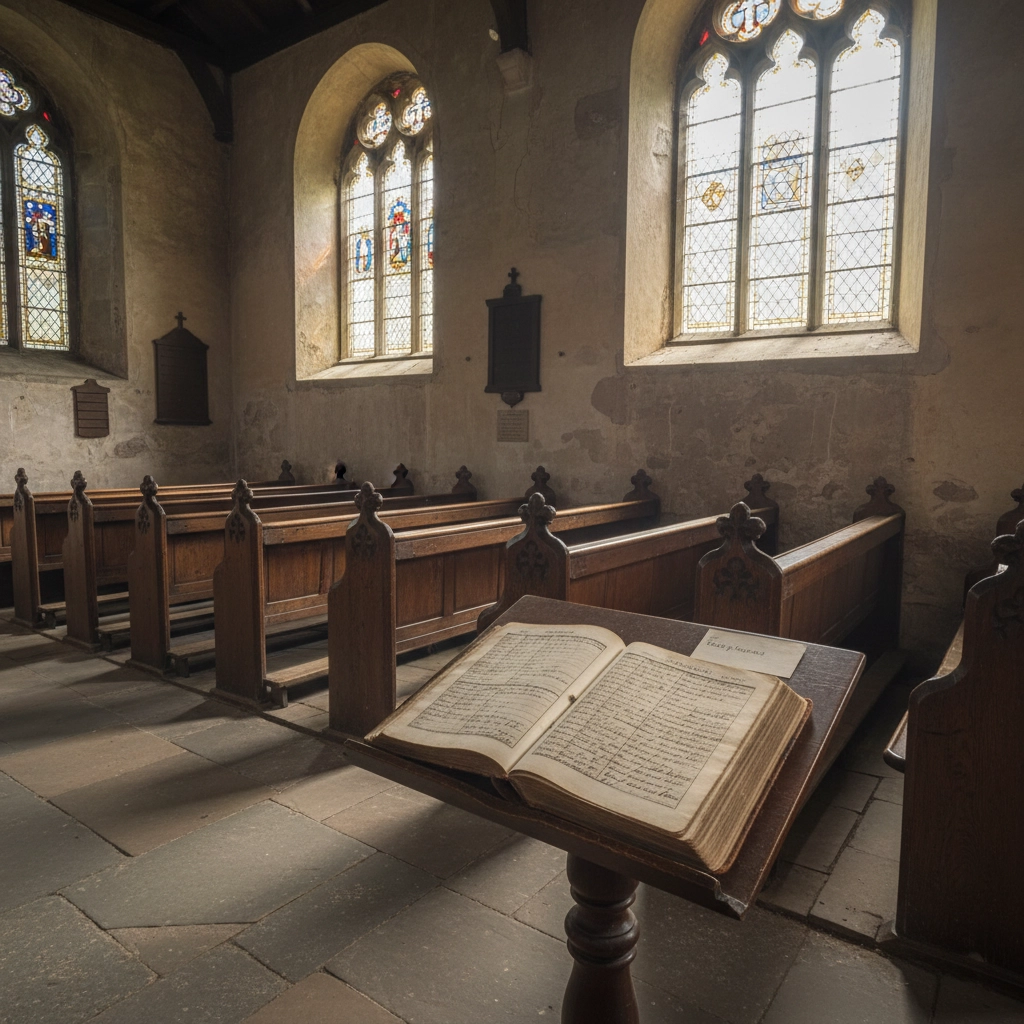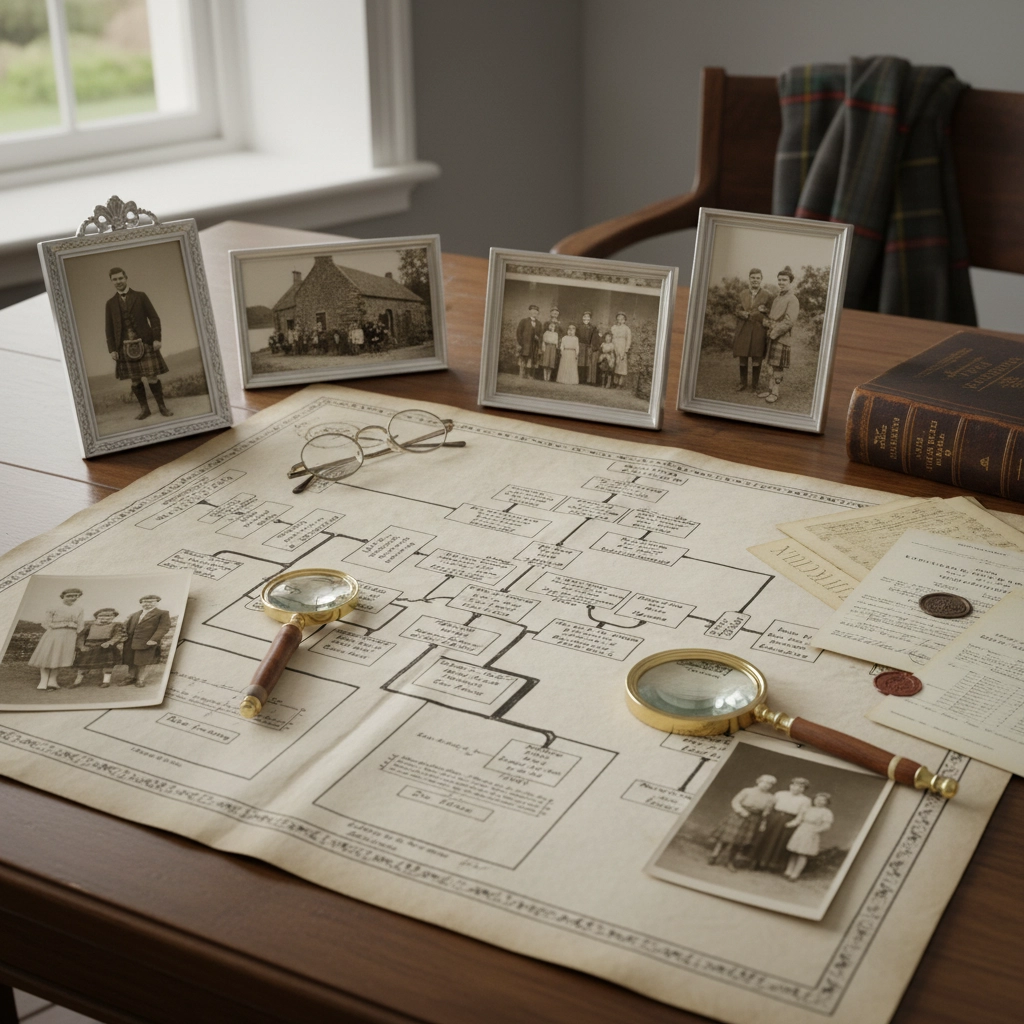
If you're researching Scottish ancestors who made their way to Atlantic Canada, you've probably hit more than a few roadblocks. Scottish surname research presents unique challenges that can leave even experienced genealogists scratching their heads. The good news? Most of these obstacles stem from common mistakes that are easily fixable once you know what to look for.
Whether your Scottish ancestors settled in Nova Scotia's Cape Breton Highlands, New Brunswick's Miramichi Valley, or Prince Edward Island's rolling farmlands, understanding these pitfalls will transform your research from frustrating to fascinating.
Mistake #1: Assuming Surnames Were Always Spelled Consistently
Here's a reality check: most people couldn't read or write until the end of the 19th century. When your great-great-grandfather told the immigration officer his name was "MacLeod," it might have been recorded as "McCloud," "MacCloud," or even "Loud" depending on the clerk's interpretation and regional accent.
In Scottish records, a surname like "Wright" could appear as "Rite," "Right," or "Royte" across different documents. This inconsistency becomes even more pronounced when you factor in the journey from Scotland to Atlantic Canada, where multiple officials recorded the same name at different points.
The Fix: Create a master list of every spelling variation you encounter. Use online tools to generate phonetic alternatives: if you're researching "MacDonald," also search for "McDonald," "McDonell," "Macdonnell," and even "Donald." When searching Nova Scotia's Highland settler records, I've seen the surname "MacKenzie" appear in over a dozen different spellings within the same parish register.

Mistake #2: Ignoring Gaelic to English Anglicisation
This is where Scottish research gets really tricky. Many Highland and Island families anglicised their Gaelic surnames either before emigration or upon arrival in Atlantic Canada. MacIain became Johnson, Mac an tSaoir became MacIntyre, and Granndach became Grant.
The massive Highland Clearances of the 18th and 19th centuries sent thousands of Gaelic-speaking Scots to Atlantic Canada, particularly to areas like Antigonish County and Cape Breton Island, where Gaelic remained the primary language well into the 20th century.
The Fix: Research both the original Gaelic form and common English equivalents. Consult resources like "The Surnames of Scotland" by George Fraser Black, which provides extensive information on Gaelic origins. Remember that your "English" surname might actually be a completely different name in Gaelic. If your ancestor was named "Campbell" in Canadian records, their original Gaelic name might have been Mac Cailein.
Mistake #3: Not Accounting for Emigration-Related Name Changes
The journey from Scotland to Atlantic Canada wasn't a simple point-A-to-point-B affair. Your ancestor might have stopped in Glasgow, sailed to Halifax, then travelled to their final destination. At each stage, different officials recorded their name, often with varying degrees of accuracy.
Some families deliberately altered their surnames to sound more "English" or "Canadian" to avoid discrimination or simply to fit in better with their new communities.
The Fix: Trace your ancestor's journey backwards, step by step. Start with their earliest Canadian records and work your way back to Scotland. Check passenger lists, immigration records, and early settlement documents at each stage. Pay special attention to the spelling used in Scottish departure records versus Canadian arrival records: they're often different.
Mistake #4: Overlooking Transcription and Recording Errors
Even when your ancestor clearly stated their name, human error crept in. Scottish accents proved challenging for English-speaking clerks in Atlantic Canadian ports. The rolling "r" in "MacGregor" might have been recorded as "MacGrigor," or the soft "ch" sound in "MacLeod" could have been written as "MacLoed."
Later, when these handwritten records were indexed or digitised, additional errors occurred. A hurried clerk's "u" might be read as "n," turning "MacLauchlan" into "MacLachlan."
The Fix: Always examine original documents when possible rather than relying solely on transcribed indexes. Consider how Scottish pronunciation might have been misinterpreted: the name "Iain" (pronounced "Ian") might appear as "John" in some records. Look for patterns in the mistakes you find; certain combinations of letters were commonly confused by clerks.

Mistake #5: Failing to Research Siblings and Extended Family
This might be the most valuable tip you'll read today. Researching only your direct ancestral line is like reading every third page of a book: you'll miss crucial plot points. Siblings often emigrated together or in sequence to Atlantic Canada, and their records frequently contain information that your direct ancestor's documents lack.
Your great-grandfather's death record might simply list "Scotland" as his birthplace, but his brother's obituary could specify "Inverness-shire" or even name the exact parish.
The Fix: Research each generation thoroughly, including all siblings and their spouses, before moving to the next generation. This strategy is particularly powerful for Scottish research because families often maintained strong connections across the Atlantic. One sibling's marriage record might list parents' names that you couldn't find anywhere else, or a sister's death certificate might provide the Scottish parish of origin that unlocks your entire research.
Mistake #6: Jumping to Conclusions About Family Connections
Finding a "James MacDonald" in Scottish records who seems to fit your timeline doesn't mean you've found your James MacDonald. With common Scottish surnames like Stewart, Campbell, MacLeod, and MacDonald, dozens of families might share the same name in the same region during the same period.
This problem is amplified in Atlantic Canada, where certain surnames cluster in specific areas. Cape Breton Island, for instance, has hundreds of MacLeod families, many with identical given names recurring across generations.
The Fix: Never assume a connection based on name and approximate dates alone. Build your case using multiple pieces of evidence: exact dates, specific locations, spouse names, children's names, and occupations. Scottish parish records often contain detailed information that can help distinguish between families. Wait until you have solid proof before adding anyone to your family tree.

Mistake #7: Skipping Generations Due to Naming Patterns
Scottish families followed traditional naming patterns that can trip up modern researchers. The first son was typically named after the paternal grandfather, the second son after the maternal grandfather, the first daughter after the paternal grandmother, and so on.
This means you might find multiple Jameses, Johns, or Marys within the same family across different generations. Without careful attention to dates and relationships, it's easy to confuse a grandfather with his grandson or to accidentally skip a generation entirely.
The Fix: Create detailed charts showing all family members with dates, locations, and relationships clearly marked. When you find multiple people with the same name in your research, don't assume they're the same person: they're often two different generations. Pay special attention during the emigration period, as this is where generational confusion most commonly occurs.
Understanding traditional Scottish naming patterns can actually help your research. If you find a John MacLeod naming his first son "Donald," there's a good chance that John's father was named Donald MacLeod.
Your Path Forward
Scottish surname research doesn't have to be a maze of confusion and dead ends. By avoiding these seven common mistakes, you'll find yourself making steady progress on even the most challenging family lines. Remember, every Scottish family that made their way to Atlantic Canada has left traces in the records: you just need to know where and how to look.
The connection between Scotland and Atlantic Canada runs deep, from the Gaelic-speaking communities of Cape Breton to the Presbyterian settlements of Prince Edward Island. Your Scottish ancestors weren't just names in a record: they were real people who made brave decisions to cross an ocean in search of better opportunities.
Start by reviewing your current research through the lens of these seven mistakes. You might discover that a "dead end" was actually just a spelling variation you hadn't considered, or that the sibling you ignored holds the key to your next breakthrough.
Every Highland clearance survivor, every Lowland farmer seeking new opportunities, and every Scottish tradesman who helped build Atlantic Canada's communities has a story worth discovering. Don't let common research mistakes prevent you from uncovering yours.
Small text: This post contains affiliate links. I may earn a small commission from purchases made through them, at no extra cost to you.
Small text: This blog post was written by Brian Nash, Chief Genealogist and Owner of How We Got Here Genealogy Services. For personalised help with your Scottish Atlantic Canadian research, visit us at howwegothere.ca.